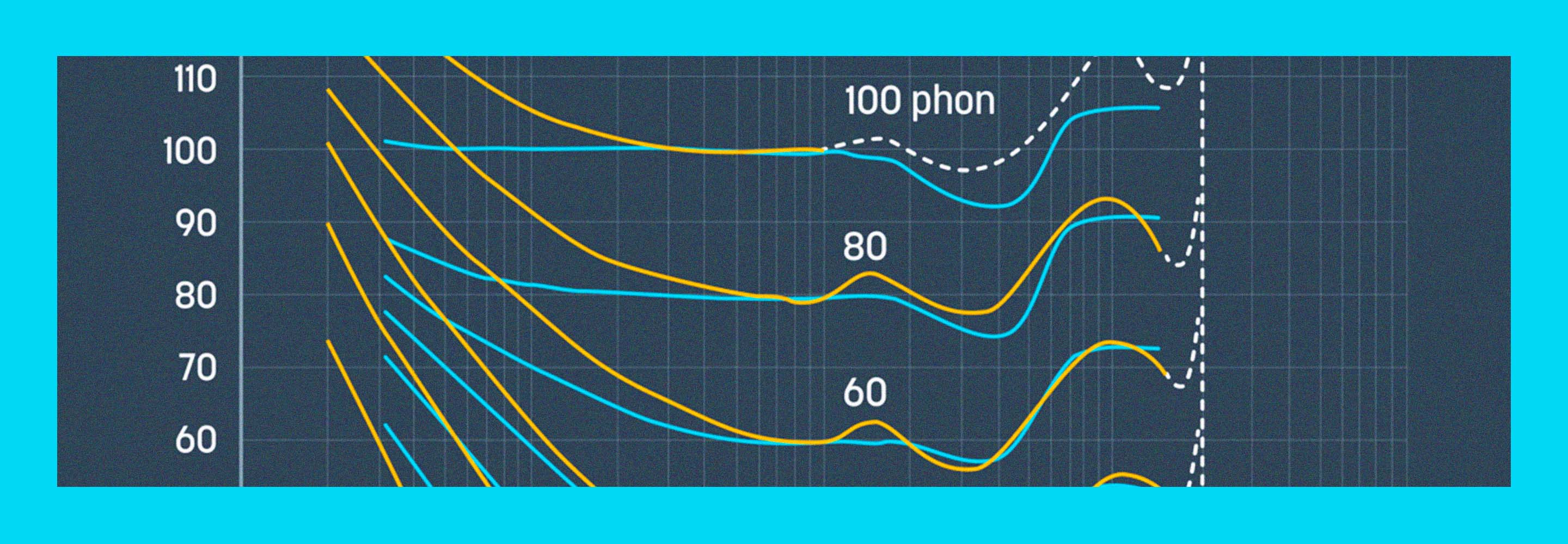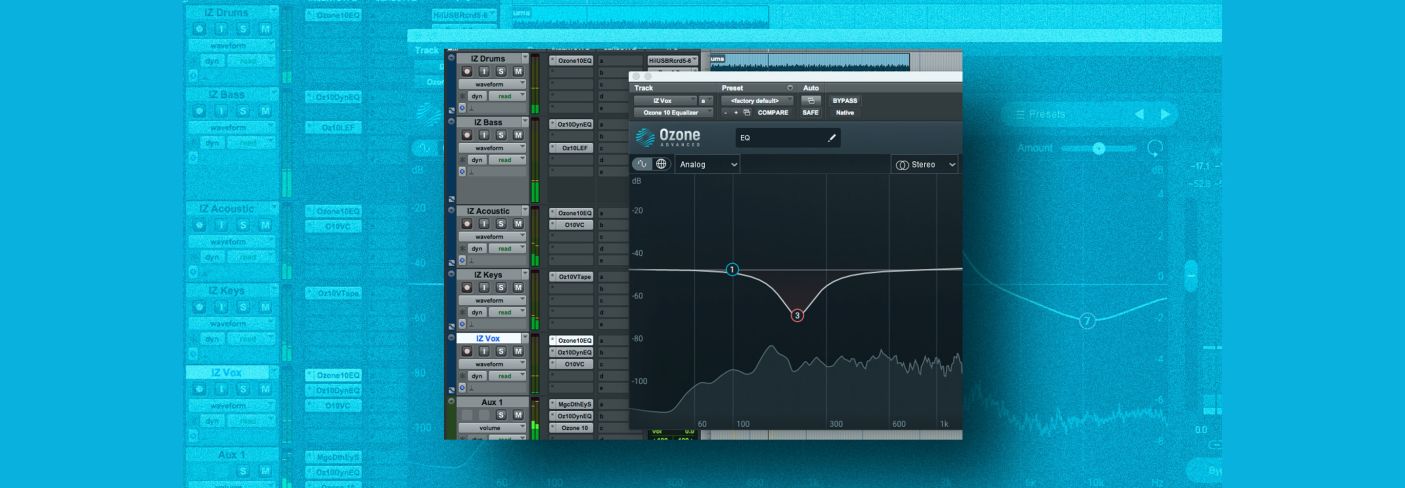
Stem mastering: How and when to use stems in audio mastering
Audio mastering with stems can open many doors, but it comes with risks. Learn when to use stems, how many to use, and how to navigate a stem mastering session.
In the traditional process of stereo mastering, a mastering engineer works on putting the finishing touches on a stereo mixdown of a song. However, in the case of stem mastering, a mix engineer delivers multiple stems—stereo exports of similar instruments, along any processing—and the mastering engineer adjusts the stems, before bouncing out a finished stereo master.
Some mastering engineers don’t provide stem mastering services, as they may see it as too similar to the mixing process, while others will gladly take on such a project. Like anything else, mastering from stems relies on good communication between client and engineers—with more creative power comes more responsibility! In this article, we’ll explore stem mastering as well as its pros and cons. We will also look at some examples of stem mastering in practice.
Need a refresher on what mastering is and why it is useful before learning about stem mastering? Check out the mastering guide from iZotope first!
Follow along with this article using iZotope


Ozone Advanced
New in Ozone 11: Stem Focus
Before we talk about mastering with stems, discover how you can harness the power of AI to rescue problematic mixes in ways that were previously impossible with the new Stem Focus feature in Ozone 11. Apply any Ozone module to an isolated stem to control the internal balance of a mixed file with mind-blowing precision and say goodbye to mix revisions.
What are stems?
In basic terms, stems are stereo mixes of multiple individual tracks, delivered without any master bus effects. For example, you could have a stem for guitars, a stem for vocals, and a stem for synths—each group mixed down and consolidated with each track’s individual processing. This can include reverb, EQ, and any dynamic processing specific to the individual track.

Audio stems
What is stem mastering?
Stem mastering uses stems to master a song versus a stereo mixdown. Stem mastering gives the mastering engineer a greater range of creative options and artistic control over a mix. Stem mastering isn’t mixing, but rather mastering with a little added flexibility to address any artistic concerns or balances.
How many stems used in the mastering process depends on the complexity of the project and the expectations and goals between client and engineer.
When should you use stem mastering?
There are a few aspects to consider when thinking about using stem mastering vs. stereo mastering. If you’re happy with the mix, you can probably stick with traditional stereo mastering. It takes less time, will cost less, and will give it that final polish and quality control that makes mastering useful in the production process.
Going back to expectations and goals—if you have the option to reconnect with your mix engineer and have them make the tweaks you want, that would be the better option. Letting the mixer have artistic input on the mix they worked on is a gracious gesture, and it will save you time and energy in the mastering process. The sooner in the production process you address an issue, the better off you’ll be.
If you aren’t able to get the mix tweaked or the mix engineer already bounced out stems for you—then stem mastering might be your answer! In addition, if you mixed your own track, and feel you can't get it “quite there,” stem mastering may be helpful as the mastering engineer is more objective and less connected to your work.
Not everything can be “fixed” with stem mastering, but the artistic freedom it lends may help craft the final vision of the song.
Since the mastering engineer has more control with using stems, it might be to easier to address creative choices that aren’t as easily tackled in traditional stereo mastering, such as issues in the low end, dialing in balances between instrument groups, and fixing that unruly vocal line that competes with the lead guitar, for example. In the next section, we’ll dive into some of the above examples using iZotope plugins in a Pro Tools session.
How to bounce your stems for mastering
Before getting into some examples, let’s talk for a second about delivery of stems. If you’re delivering files to an engineer for stem mastering and you are bouncing them out yourself, here are a few things to remember:
- Consolidate and bounce stems so the start and end times of each line up that way the engineer can just drop them into a new session and get to work.
- Label files accordingly. Whether you have 3 stems or 6, make sure the engineer knows which stem is which.
- Remove any overall bus processing such as limiting. As in a stereo mastering session, it’s best to let the mastering engineer add any limiting at the very end of the process.
If you need a refresher on the general step by step process of mastering a song, this tutorial on how to master a song is worth a read before moving forward.
A note about noise reduction
Quality control is an important part of the mastering process, and that includes keeping an ear out for audio quality issues. One of the best things about stem mastering is the ability to remove unwanted sounds—mouth clicks, a low-level hum, crackle or ticks from bad edits—without having any noise removal process affect the overall mix. The best time to remove unwanted noises is before the mastering process begins and that’s where iZotope RX shines—take care of those issues before moving on to other things!
How to master from stems
Let’s get into a few core elements of stem mastering. The ProTools session was set up with all the stems feeding into a stereo Aux track which contained final plugins and limiting, and was printed.
For this example, the main points addressed with stem mastering are described, along with some screenshots and at the end—a before and after!
1. Low end level and balance
A benefit of stem mastering is the ability to isolate low end information without any processing affecting the overall mix. If any low end information suffers from imaging issues or would benefit from dynamic compression to give it some movement or control—you have the freedom to manipulate it. One common imaging task is narrowing low end information (colloquially called “mono-ing” the low end). While not always needed, it can be helpful on audio destined for vinyl.
In this stem mastering session, the Low End Focus module in Ozone was used to help control and focus the attack and release of the bass line. Starting with the Clean and Punchy preset, adjusting to taste. After some listening, Smooth was chosen over Punchy to keep the sustained bass notes from sounding too clamped down. The EQ was also used to help keep a range of the instrument from sticking out a bit too much in the mix.
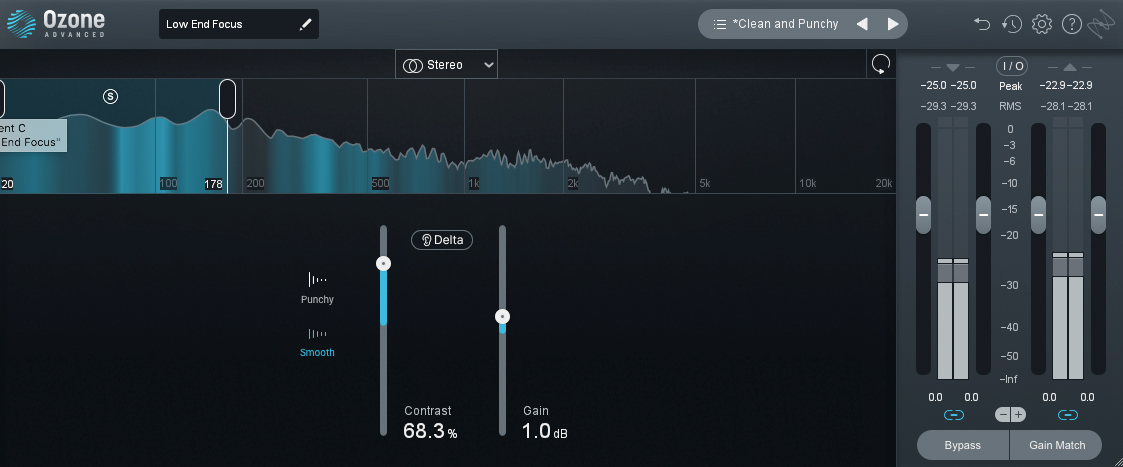
Low End Focus helps control and focus the bass attack and release

Dynamic EQ keeps a range of the instrument from sticking out
Before & After Low End Level and Balance
2. Vocal adjustments
In a traditional mastering situation, it can be hard to effectively manipulate and control the balance between vocals and the rest of the mix. While mid/side processing can be applied in a way that predominantly affects the vocals (as they usually lie solidly in “mid” information)—there’s still a limit to how much you can change the overall balance and level.
By having the vocals on their own stem, you have the freedom to choose what works best for the mix—either vocal riding, or multiband/stereo compression, EQ changes, etc.—and apply that accordingly.
Bonus! You can also de-ess the vocal stem separately (in case the mixer did not de-ess enough or at all, if needed) so you aren’t affecting the “ess” frequency of the whole mix.
For this example, the vocal line was EQ’d using the Dynamic EQ module to help smooth out specific frequency peaks.

Dynamic EQ module helps smooth out specific frequency peaks in the vocal
The EQ module was then used to help the vocal line stand out a bit more in the mix, as well as tame some sibilance.
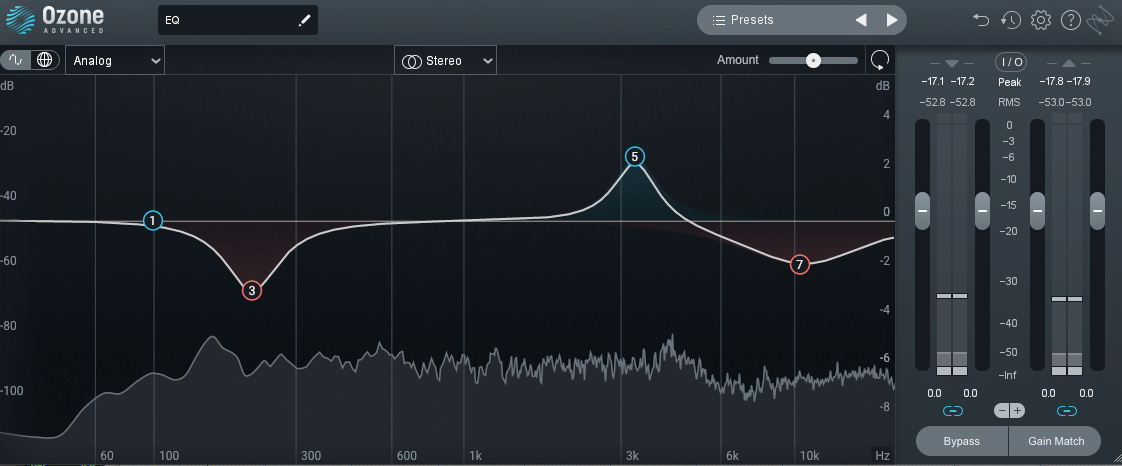
EQ module is helping the vocal stand out a bit more and tame sibilance
The Vintage Compressor was also used to add some warmth and movement.

Adding Vintage Compressor to bring warmth
Here's how all of those changes sound together on the vocals.
Vocals Before & After EQ, Compression
3. General instrumental balance using EQ and compression
In stereo mastering any EQ change affects the overall mix, but when provided with stems you are free to adjust each instrument grouping separately. For example, if you feel the guitars are too present in relation to the vocal stem, you can adjust the EQ of the guitars separately from the vocals. You don’t have quite the level of freedom you would with multitracks (as a mixer would), but you have more freedom than in a stereo mastering setting.
You also have the ability to apply compression across an instrument group to enhance their space in a mix, overall tone and, if warranted, add harmonic distortion and saturation.
In this example, the brightness of the drum kit was enhanced using the EQ module.
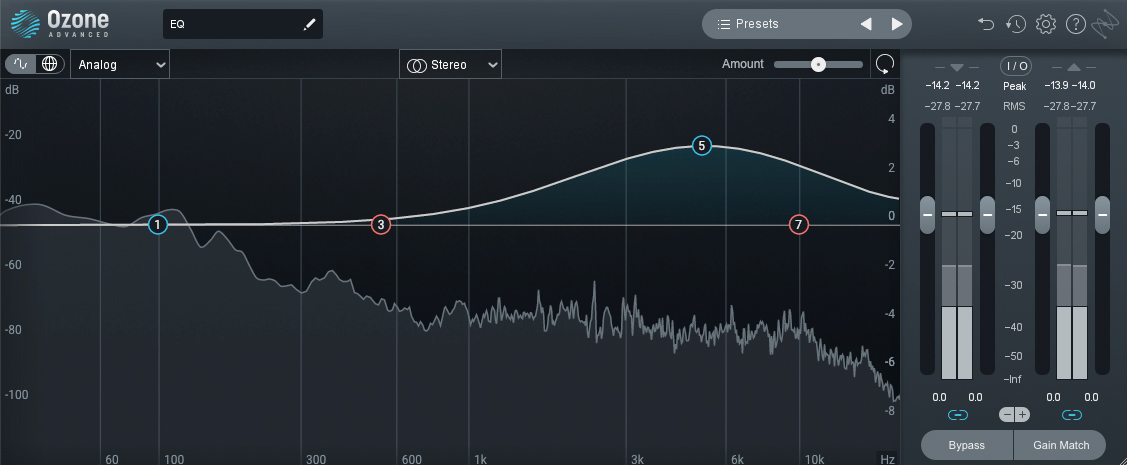
Ozone EQ module on drums
Drums Before & After EQ
Next, the Vintage Compression and EQ modules were used on the guitar to help enhance the overall tone in the mix.

Ozone Vintage compressor on the guitar
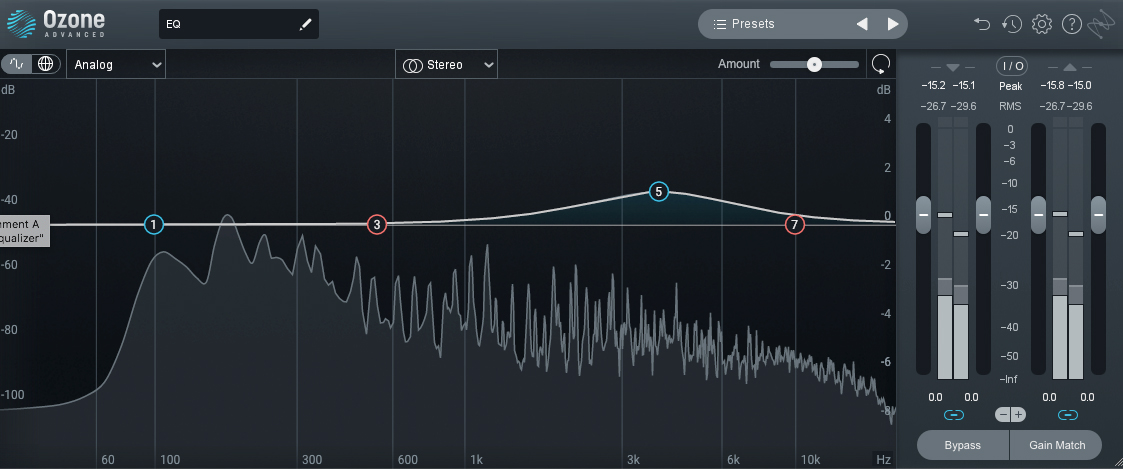
Ozone EQ module on the guitar
Guitar Before & After Compression and EQ
And lastly the Vintage Tape module was used on the keys to help add warmth and fullness.

Ozone Vintage Tape module on keys
Keys Before & After Vintage Tape Module
These choices helped those stems sit together better in the mix.
4. Final master bus processing
Now we've moved onto final master bus processing. In this example, overall EQ was applied, as well as utilization of the Stabilizer module for clarity and Maximizer for limiting. These changes are used in a more “traditional” sort of way—they are applied across the final stereo master. The All Purpose Mix Bus preset was chosen, and adjusted to fit the needs of the song.
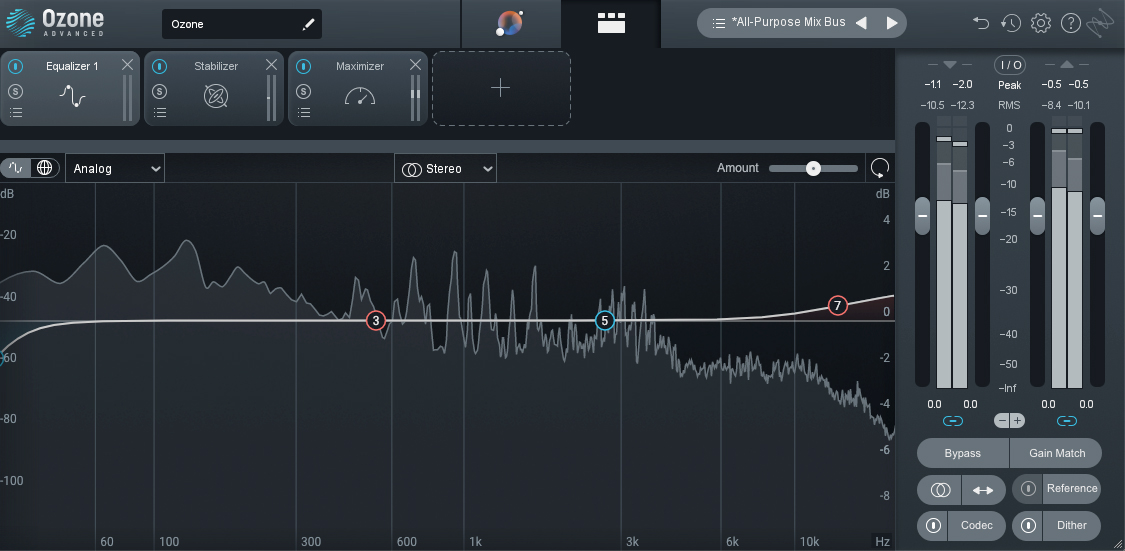
Ozone EQ module

Ozone Stabilizer module
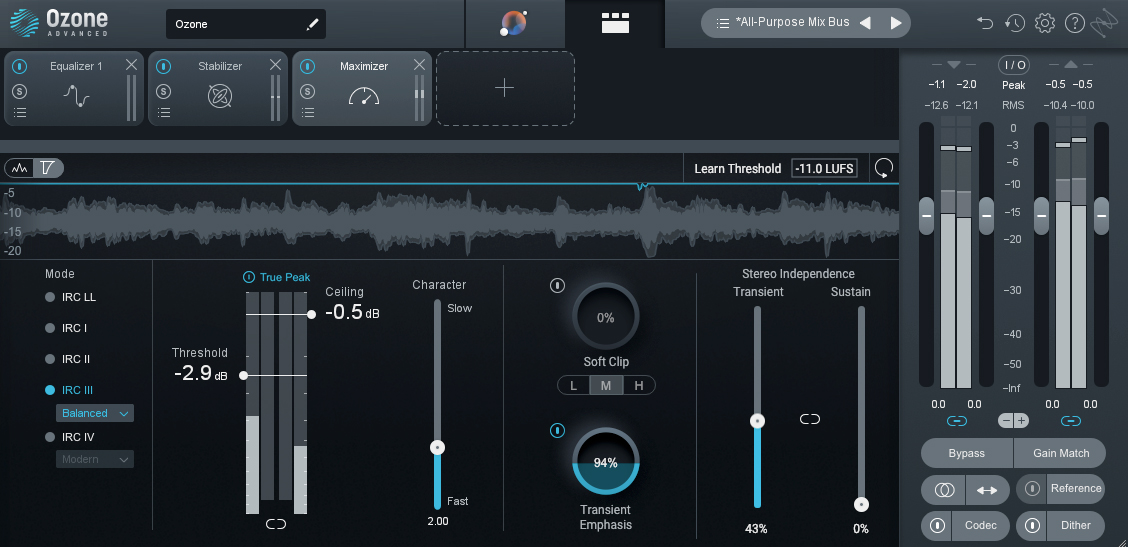
Ozone Maximizer
Stem mastering, before and after
The original mix and final master were generally level matched (the level of the original mix brought up to the level of the master), so you can hear the sonic differences.
"Chill" Before & After Stem Mastering
Start mastering with stems
Stem mastering uses stems in the mastering process vs. a singular stereo file in a traditional mastering setting.It offers more control and freedom, but also will cost more, take more time, and require efficient and open lines of communication.
Like so much in regard to creative choices, discretion is important. Knowing when to consider stem mastering over traditional mastering is fundamental. If you’re the artist, being able to communicate your needs to both your mix engineer and mastering engineer is essential, and if you’re mastering someone else’s mixes (whether by stem or stereo) managing expectations is important.For more on working with mastering engineers, check out iZotope’s tutorial on how to work with mastering engineers for a professional, efficient production.
